Content marketing continues to be a massive hit among brands. Companies spend approximately 26% of their marketing budget on content creation. Undoubtedly, B2B Companies need a robust content marketing strategy to succeed in the current competitive landscape.
For instance, General Electric (G.E.) extensively uses thought leadership content to attract potential customers and retain existing buyers. G.E. News, an online media portal that shares content about emerging technologies, has established an audience of more than 100,000 subscribers and currently records around 3.7 million monthly visits, according to Content Grip.
Several companies like G.E., such as Deloitte, SalesForce, and HootSuite, to name a few, heavily rely on providing valuable content to woo their audiences consistently.
Table of Contents
Why your business needs a content marketing strategy?
Everything is content, from stories to emails, graphics, whitepapers, documentaries, blogs, videos, and campaigns. Content is like a window to what your company does.
Valuable and relevant content allows you to attract and engage your audience, build trust and credibility, and establish meaningful relationships.
Content marketing helps B2B businesses to:
Build Awareness: 93% of buying cycles start with an online search. Well-crafted content that ranks high in search engines will get you noticed.
- Create Preference: Build trust by generating engaging and helpful content regularly. People are more likely to buy from companies with whom they have a relationship.
- Convert Prospects: ‘Content is King’ and can be a deal maker or breaker. So, after becoming a preferred destination for your audience, you must stick to your reputation by engaging with your audience meaningfully. Think of content marketing as a long-term strategy that yields results over time.
- Build Community: You can turn your clients into your evangelists. Delight your customers with exceptional services and encourage them to share their experiences by writing reviews.
How to build B2B Content Marketing Strategy from Start to Finish?
Successful brands ace content marketing by creating meaningful and engaging content, but more than that, they spend a reasonable amount of time and resources in developing a strategy.
You must be wondering why there is so much emphasis on ‘strategy’ – because it serves as a roadmap. See it as a ‘why’ behind what you are doing. This ‘why’ is essential because it helps you stay focused and achieve the desired outcome.
A carefully crafted B2B content marketing strategy includes everything from understanding your prospects to attracting and retaining them. This entire process is spread across the following steps from start to finish.
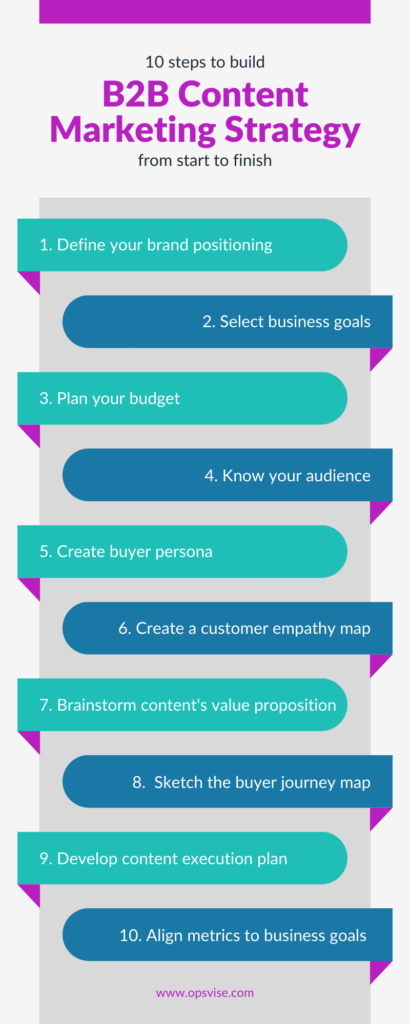
Define your brand positioning
If you are a B2B brand – know one thing – your prospects and customers are overwhelmed almost all the time. Blame the countless competitors and the rising time-consuming content online.
Your brand must stand out and shine so bright that the content deluge doesn’t swallow you.
Here comes ‘brand positioning’ – Shape your brand so that it occupies a unique place in the mind of your customers/clients. You may say it’s easier said than done. I understand, but building a foundation is essential, or else everything we will make will fall like a house of cards.
Here is what you can do. Run a brand positioning workshop. Work with your team to:
- Define the core values of your brand, its purpose, and its vision. A Golden Circle Framework can help you with this.
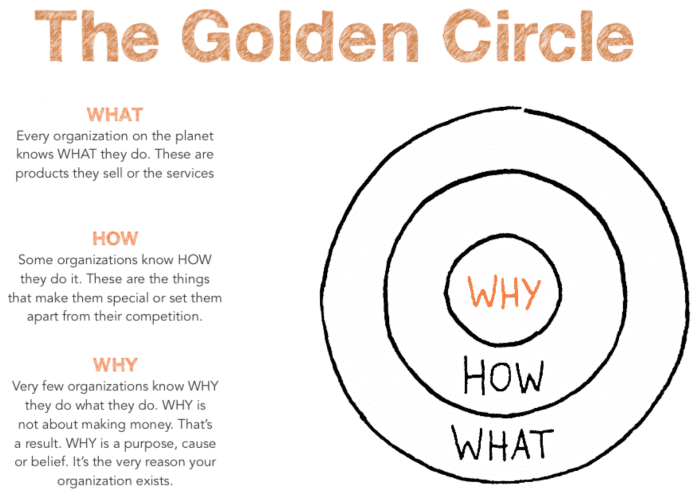
- Understand your Customers, Company and Competition. A 3Cs or a strategic triangle framework forces you to think about your business in a structured way.
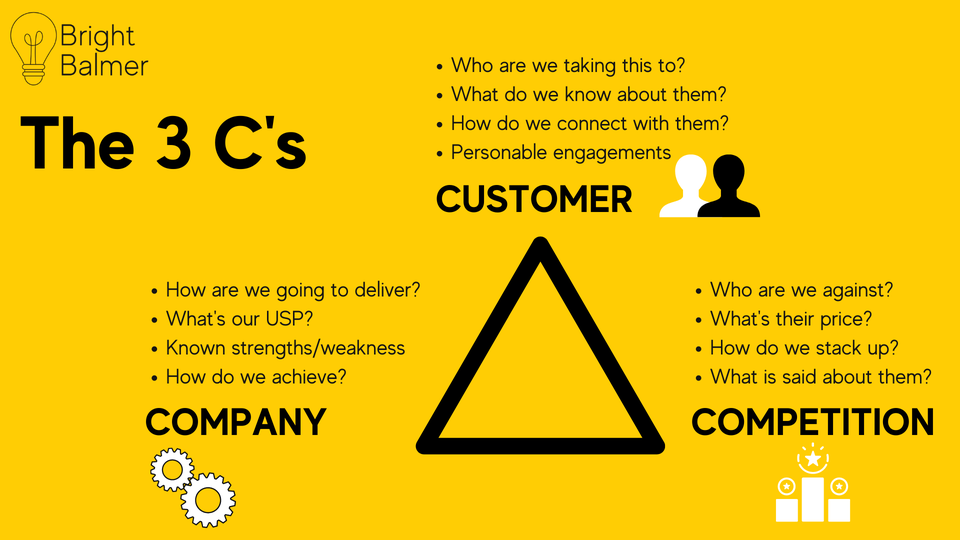
- Now, think of a USP that you can use to influence your customer or client. Common positionings are:
- Price
- Quality
- Features
- Application
- Customer service
- And finally, come up with a solid brand message that highlights your USP, which will be your brand positioning.
Select Business Goals

Disclaimer: I am not referring to some cookie-cutter life goals here. I am talking about action-oriented research-backed business goals. So put everything else aside and listen carefully.
If you want to run a successful B2B brand, define your business goals at the start of the year or quarter or whatever timeline suits you. Once done, share these goals with your team – it’s always good to have great minds aligned.
Remember to select SMART (specific, measurable, achievable, relevant, time-bound) goals, and alongside each point, put a timeline. For instance, you can set a goal to:
- Increase YoY sales by 15%
- Gain 5% market share by year-end
- Increase Q2 profit by 10
Plan your budget
Your budget will be dependent on your unique situation, and large enterprises will be able to spend much more than small businesses. Your business goals will have to align with the budget and resources at your disposal.
Companies use different methods to align budgets to their marketing efforts. Your starting point for planning next year’s content marketing budget can be the current year’s marketing spend, or you can choose a zero-based budgeting approach, i.e., start from scratch.
In the traditional budgeting approach (i.e., with this year’s budget as a base), you consider existing projects, resources, and tools and suggest changes as per new learnings, evolving industry dynamics, and new focus areas. However, in the Zero-based budgeting method, a plan is made based on a cost-benefit analysis of both new and existing projects.
In either method, one needs to do the following:
- Review benchmarks
- Consider your company size and industry
- Take stock of past projects’ effectiveness
- Estimate the necessary funds for new and existing projects
- Calculate the funds needed for tools and technology
- Plan for the resources required
- Estimate third-party vendors or contractors’ expenses
- Forecast content promotional costs (Google search ads, LinkedIn ads, etc.)
Know your audience and create a target Buyer Persona
In 2022, your brand is fighting competition every single minute. As a B2B brand, if you have not yet invested time in developing buyer personas, then take that leap. In marketing keynote speaker Adele Revella’s words, ‘Buyer personas are examples of real buyers who influence decisions about the products, services or solutions you market.’ A thoughtfully crafted buyer persona will allow you to improve your conversions.
Semrush’s infographic highlights Netproprex’s outstanding results from buyer persona creation efforts. The company reported a 100% increase in page views after focusing on buyer personas.
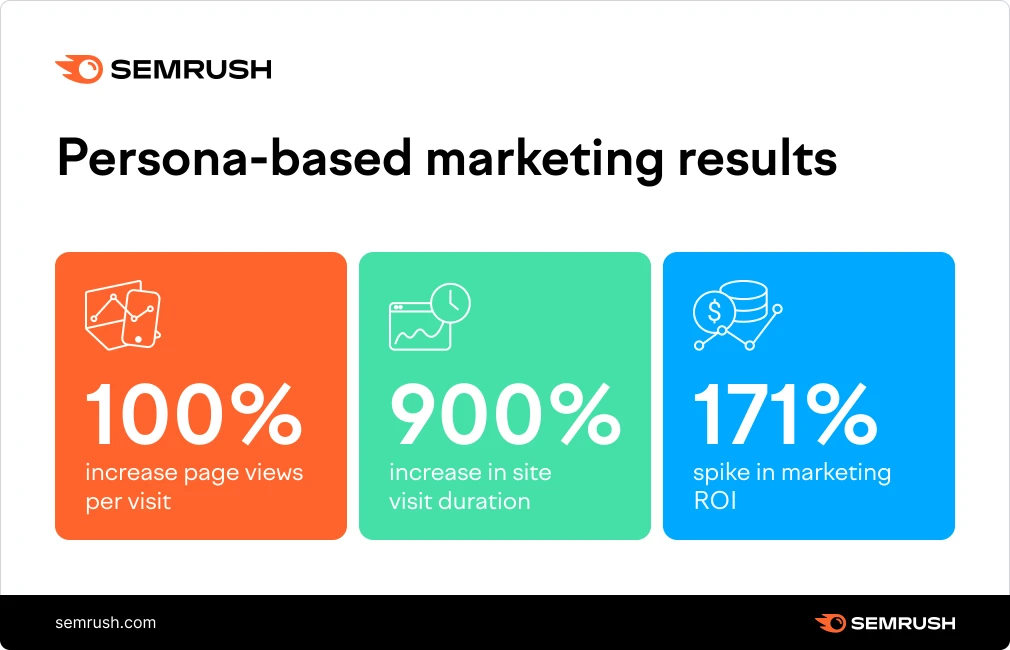
A buyer persona template may include
- demographics (age, income, gender, etc.),
- psychographics (lifestyle, values, hobbies and interests, etc.)
- professional status (job title, industry, etc.)
- behavioral patterns (usage, intent, purchase history, etc.)
- pain points (challenges, issues, obstacles, fears, etc.)
You can use sites like edit.org to create and modify buyer persona templates online.
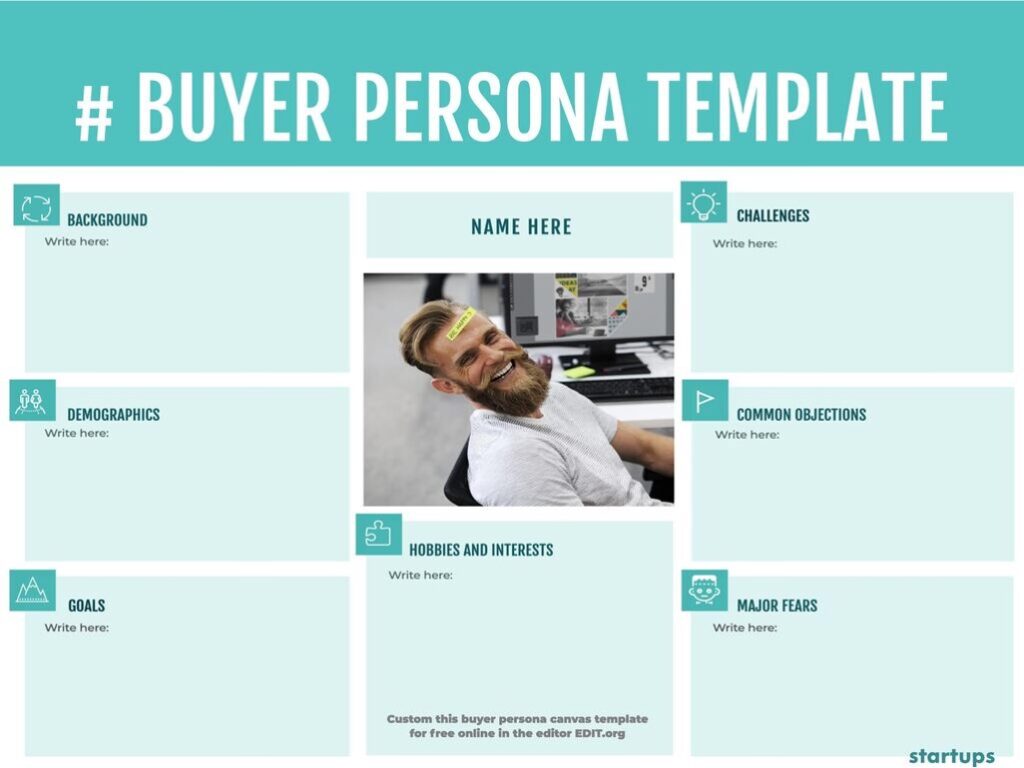
Also, here are some tips on how you can find data to create a buyer persona:
- Start by interviewing your customers. Meet them or send them a survey to answer. Reach out to your prospects who have engaged with you on your blog or social media page
- Get information from your frontline sales team. Your colleagues might be sitting on valuable information about your clients and prospects that they can easily share with you
- Use online tools, such as Google Analytics, Facebook audience data, and Semrush market explorer to uncover data about your target persona
Create a Customer Empathy Map
Want to understand your clients better? Think like a detective and a psychologist.
You are a B2B brand with multiple buyer personas, and you want to put your best content out that works wonders for each of them. Now, you are thinking hard, flicking your pen back and forth, trying to get into the minds of your prospects, wondering what they like.
Would you like a visual tool that can make this process simpler?
Empathy Map is a tool to capture users’ behavior or attitude visually. You want the best content out – instead of digging in the trenches, you create an ‘Empathy Map’ for each buyer persona. The tool will capture their thoughts, emotions, and beliefs and allow you to peep into their environment – what moves them, aggravates them, and more.
In a few minutes, you will be able to understand your client and distill information better than anyone else. Simple and smart!
Have a look at our empathy map below.
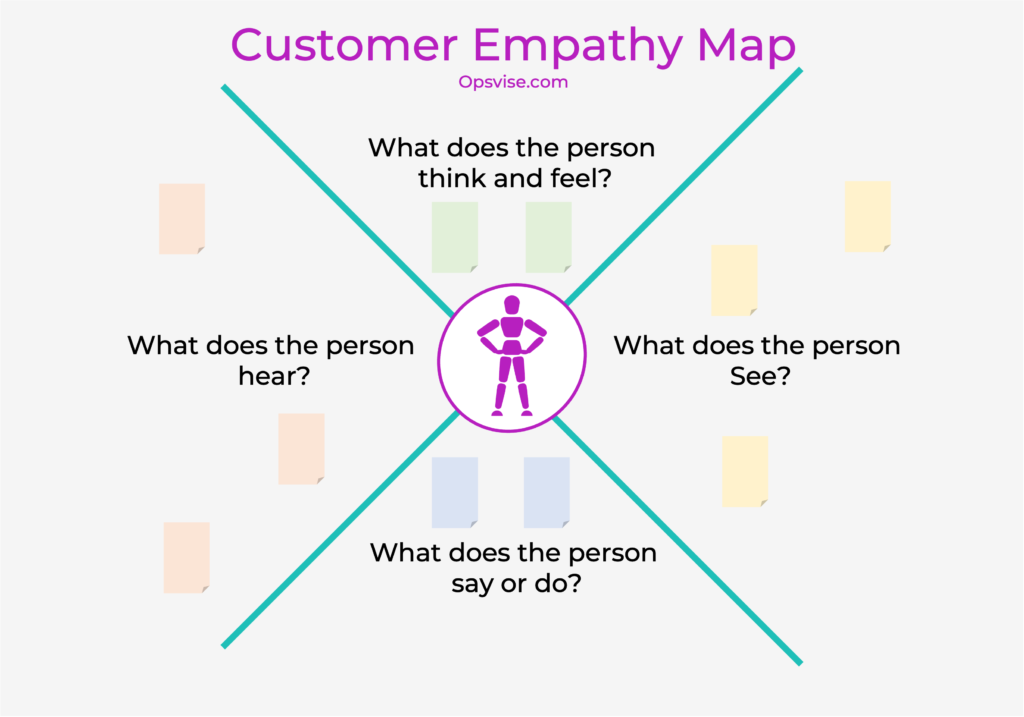
Brainstorm content’s value proposition
For once, imagine yourself creating content that serves no purpose or provides information that your customers don’t care about…Yikes!
Now you know your ideal customer’s personality, pain points, needs, perspectives, and challenges together in the form of an avatar. Your job is to create content that your avatar will love to read.
Remember, your clients and prospects are living, breathing individuals with specific tastes, preferences, and personalities. Even though they are linked to business entities, they operate from the core of their emotions. And wherever emotions are involved, vulnerability, trust, intention, and authenticity are at play.
So, how can a B2B brand create and market content that caters to all the above? Connect with the client on a personal level and turn the brand into a bond.
- Think of the paint point or a challenge your content will solve.
- Like USP, think of what sets your content apart from your competition. Also, define what role your content plays in the overall customer experience.
- Think of stories you will tell
- Humanize your brand. Everyone shares their success story. You might want to share how many times you tripped and got back on your feet
- The tone is important, too – once you know what to convey or promise, it’s essential to decide ‘how’ and ‘what tone’ you should use in your messaging. Your tone must say that you understand the problem of your customers. Let’s say that an energy company may prefer a more formal style than a B2B SaaS company talking about cutting-edge technology.

Map Buyers Journey
We all have, at some point, experienced a buyer journey when buying new clothes, an iPhone, or patio furniture. Correct? So, we know what a B2B buyer journey typically looks like from start to finish. Well, not really!
B2B buyer journey is far from a typical B2C buyer journey. B2B buying decision-making process is full of research, pauses, starts and stops, detours, forward leaps, and a reversing course. A team of individuals collectively takes a B2B buying decision most of the time.
As the risk is higher, B2B buyers are more specific in their purchases and have a logical, process-driven approach to selecting a product or service.
So, how does this affect your B2B content marketing strategy?
In one sentence, increase your focus on referrals and repeat sales.
Attract -> Engage -> Delight
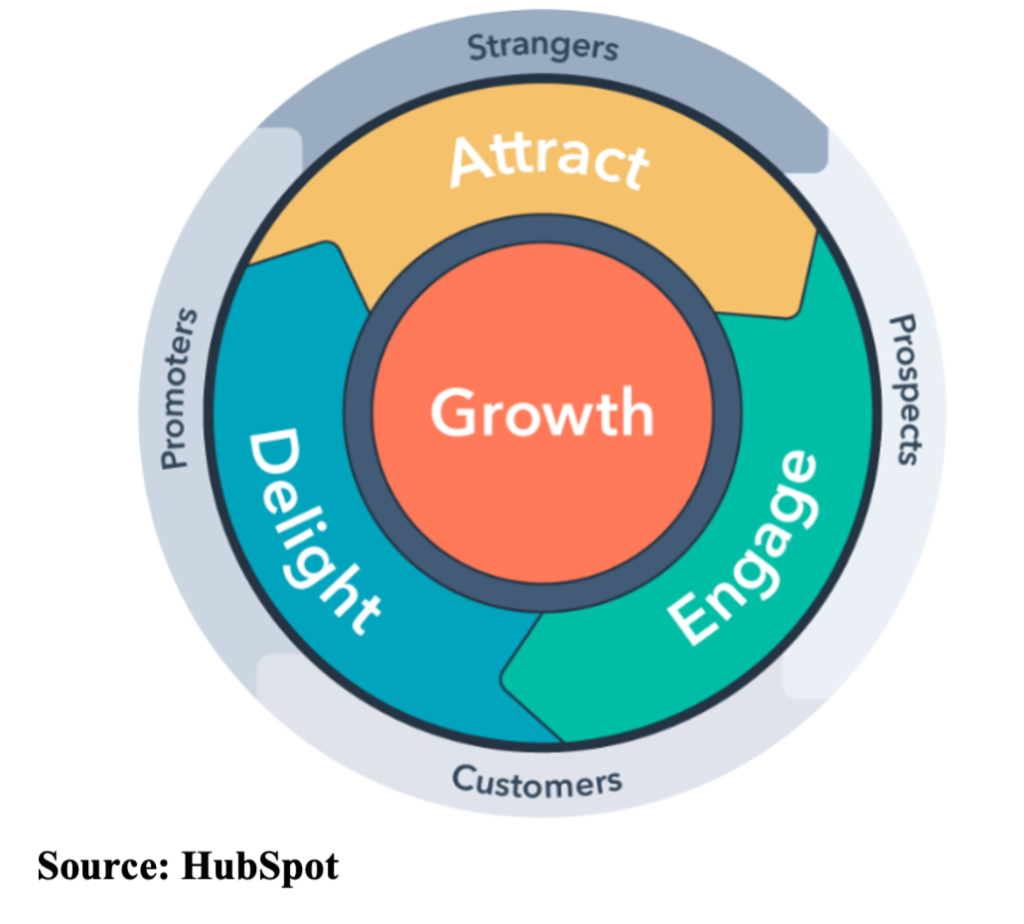
At Inbound 2018, HubSpot’s annual marketing conference, HubSpot’s Co-Founder and CEO Brian Halligan introduced the Flywheel Model. Today, this model is used extensively in the content marketing world.
Companies are attracting prospects with valuable content and getting to know their tastes and preferences – what works and what doesn’t.
Targeted prospects are then introduced to an engaging experience of information products that help them further their research, leading them to a positive purchasing experience.
The last phase is empowering the customers and cementing a relationship with them. If the customers are delighted, all that a company needs to do is offer their customers exciting incentives to stick around.
At each stage of the flywheel, there are forces that you can leverage from a content marketing point of view:
- Use blog posts, videos, podcasts, whitepapers, or anything that is information-rich to ‘Attract’ leads
- Once the customers become aware of your offering, they might look for more. That is when we ‘Engage’ them with demos, valuable landing pages, tutorials, emails, or webinars
- Now, selling to prospects who have done their preliminary research and reached this stage is straightforward. All you need to do is use the power of positive reviews, your successful cases, your social media community, or any other kind of dynamic content to build trust.
Many successful brands use the ‘flywheel’ model to accelerate their growth.
Develop an execution plan
It seems magic how brands consistently come up with persuasive ideas to lure potential buyers, but a lot goes behind the scenes. An essential element of your B2B content marketing strategy is an execution plan. The following points will help you generate valuable content consistently.
Start by creating a high-level editorial calendar

An editorial calendar is a visual workflow for content creators and marketers to plan their daily, weekly, and monthly tasks. You can download free editorial templates from Hubspot’s resources link.
A calendar helps a team organize, divide and prioritize content creation efforts.
Core elements of a content calendar will include:
- The topic of the content piece
- Date of release
- A content owner or author – who is responsible for content ideation, creation, and publishing
- Status – Pending, in-progress or completed
- Keywords Targeted
- Content distribution channels
Audit your content
Stop. Breathe. Reflect. Reset. Nope! I am not talking yoga here. I am talking about how you can realign content on your website to make it more valuable and meaningful for your prospects and clients.
Take an inventory of content your prospects consume at each stage of their journey. Look for ways you can optimize and upsell it. Take out dedicated time to go through your website, identify content that needs improvement, reflect on how you can make it more interesting, and, if required, give it a new perspective or put it in a fresh format.
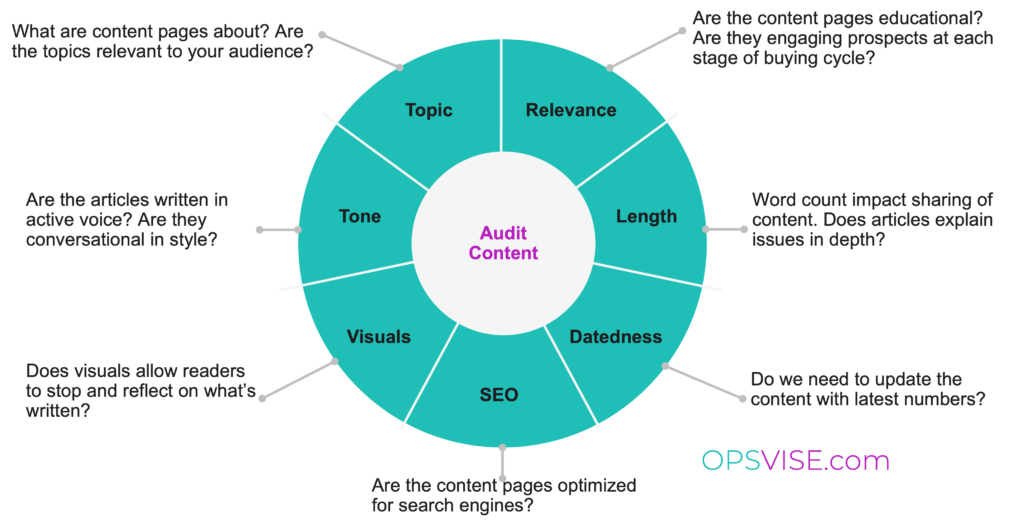
Focus on topic clusters and create pillar pages
A pillar page – a high-level content page that covers all aspects of a topic hyperlinked by in-depth blog posts – helps increase search engine rankings.
Churn a lot of quality content on a niche topic to build authority.
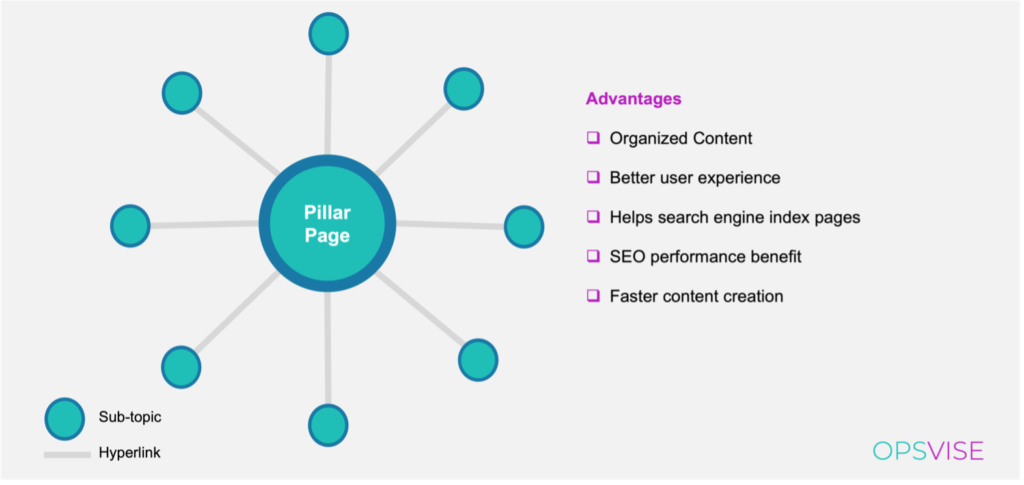
Repurpose your content
You don’t have to create new content day in and day out. Repurposing content is a great way to increase your audience.
Take out dedicated time to identify content that needs refurbishing, reflect on how you can make it more interesting, give it a new perspective or put it in a fresh format and repurpose it according to changing buyers’ tastes.
You may feel that reinventing your wheel may be a useless exercise, but it’s not. Instead, it is one of the most efficient content marketing tactics that can help you align with your current marketing goals.
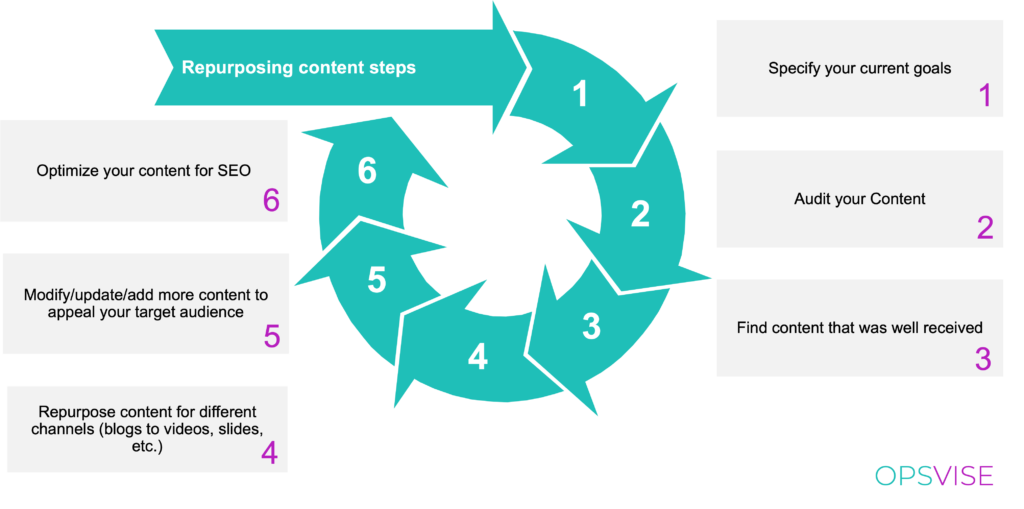
Create content Ideas generation system
If you think you can generate content ideas consistently without a process, you are wrong! You need a system and an approach to develop valuable content ideas for your target audience. Now, I will share a way to quickly generate 100s of impactful ideas!
- Go to answerthepublic.com. Enter a high-level topic that you want to write about in the search box—for example, B2B content Marketing
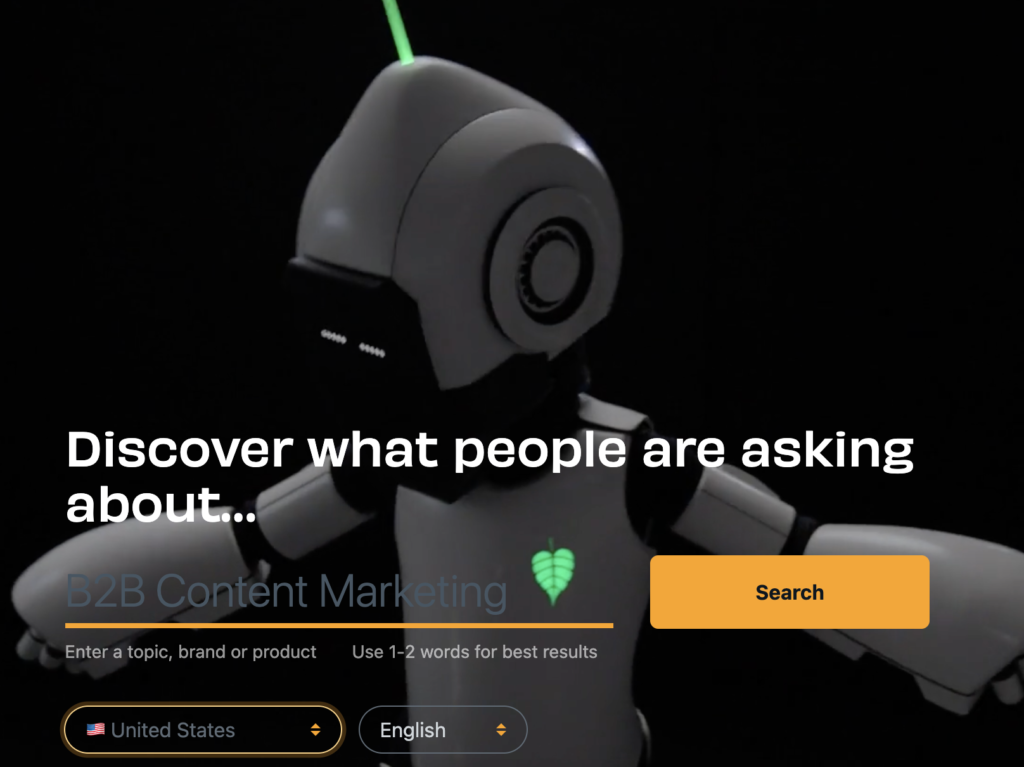
- Your search query will result in questions people are asking related to your topic/sector. For instance – “what is b2b content marketing?”

- Copy these questions in excel and use tools like Google keyword planner, Semrush, and Moz to know the volumes of searches for these questions. Further, look at the difficulty of ranking for these keywords, as you do not want to target keywords with high difficulty scores.
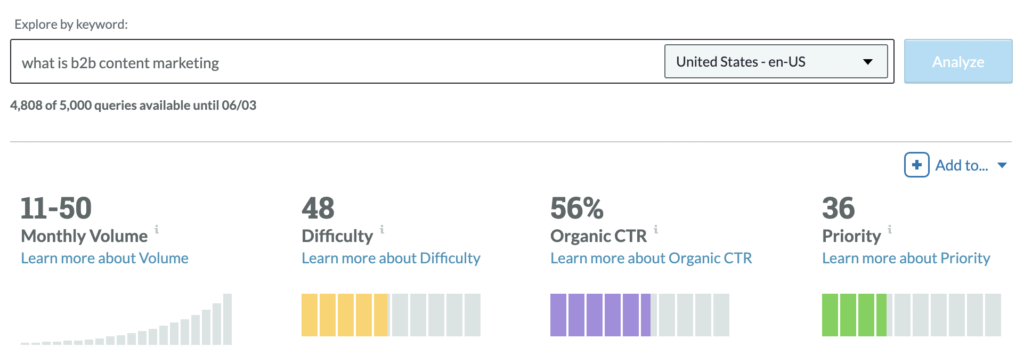
- Now, shortlist keywords that have the right balance of volume and difficulty. Also, consider your expertise when shortlisting keywords/topics you will be writing on. Make sure you pick keywords to create engaging content for each stage of the consumer buying cycle.
- Now that you have a list of broad questions that you will be answering, think of long-form content pieces, such as e-books, video series, tutorials, etc.
- Start small, one sub-topic at a time, with a quest to create valuable long-form content for your target audience.
- Think of content ideas related to each sub-topic. For instance, if you plan to create an e-book titled B2B content marketing for small businesses, you can make a blog post titled “Top 10 content editing tools for small businesses”. You can also write about the latest trends, new products, use cases, etc., leading to the desired e-book.
Bonus Tips
- Read ferociously and on a wide variety of topics and industries to get ideas consistently
- Ideation and creation go hand-in-hand. Go deeper into a topic, and more ideas will emerge
P.S. Also, read our 40-point checklist to write a perfect blog post. This blog checklist covers everything you need to know about creating killer content.
Align marketing metrics with business goals
After going through a drill of making your content more appealing, and strategizing it for better engagement, what follows next is arguably the most important part of your B2B content marketing strategy. Measuring the ROI, or should we say, measuring the impact of your drill. Yes! It makes you feel sluggish, but you would never know if you are heading in the right direction without this exercise.
All those upward trends, likes, and shares won’t give you an accurate picture. Most people who visit your website or view or engage with your content won’t buy your product or service. So, how do you select marketing objectives that align with your business goals?
- Involve your marketing team in the business planning process. Marketing is a crucial function of a business, and this team should not work in a vacuum
- Once you have an outline of the business plan, work backward to find marketing metrics to support your business goals.
- Prioritize metrics for each of the content marketing objectives – Reach, Engage, Convert, and Retail
Leading metrics include
- Reach – Website Traffic, Social Media Impressions
- Engage – Page Value, # of Pages Viewed, Opt-ins, Bounce Rate, Time on Website
- Convert – Qualified Leads, Leads value, Cost per Acquisition, Sales
- Retain – Customer Lifetime value, Retention Rate, Reviews, Client satisfaction
Conclusion
Putting a B2B content marketing strategy is certainly not a cakewalk as it involves several factors. To add to that, the complexities of consumer behavior add fuel to the fire. But, if your end objective is clear and you invest time in creating a solid content marketing strategy – half the battle is won already! Remember, content marketing is an excellent tool for creating brand awareness and building trust and credibility with the target audience. Immediately rectify if your content engine leaks or the results don’t justify your efforts. Reach out to us. We will love to have a conversation with you! Also, please comment on how did you like this B2B content marketing strategy guide.



